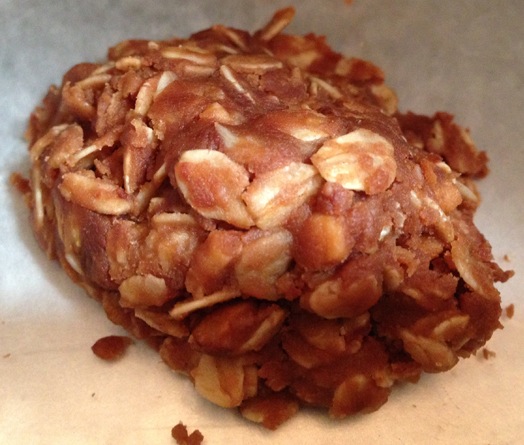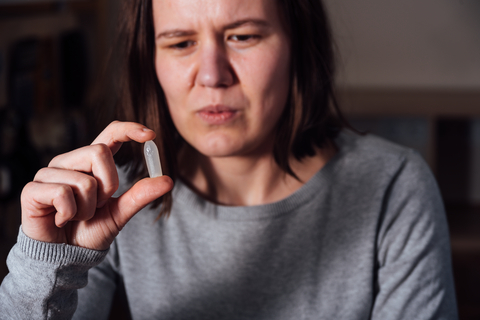I can’t cover all the diseases and conditions that cannabis medicine is helpful for, so that will be up to you, as individuals, since we are all unique. I can tell you a few things that may make your cannabis journey a little easier though, so this post is about how cannabinoids are absorbed and distributed via the different methods of delivery. Each method has its benefits and drawbacks, depending on your ailment and also on how you feel about being high.
No matter what reason you are using cannabis as medicine, it’s good to know how to get the most out of it. Although legal cannabis is slowly dropping in price to get closer to the prices on the street, legal cannabis medicine gives the serious patient a huge edge in that the medicine is tested, (in our state), for contaminants and cannabinoid percentage. Armed with this knowledge it can be easier to find your personal and most effective dose, and understanding how your body processes cannabinoids is indeed much needed info as well.
Cannabinoid receptors exist throughout the body but are concentrated in the central nervous system and the digestive system. There are many other (non cannabinoid) receptors throughout our bodies that also deliver cannabinoids to where they are needed, just as I spoke about in this post. For now I just want to provide info on the absorption rates of the different methods of ingestion.
 Inhalation – Smoking or Vaping – Absorption of cannabinoids takes place the quickest with this method, so it gives fast relief. The cannabinoids enter the body through the lungs and travel first to your heart and then very quickly to the brain and other organs as it is pumped through your body. However, only about 15% of the cannabinoids present in the product are actually absorbed. This method is great for quick relief of symptoms, but isn’t ideal for people who must go to a job or have no place to medicate in this fashion often enough for the efficacy they need. And some folks just don’t want to get high at all.
Inhalation – Smoking or Vaping – Absorption of cannabinoids takes place the quickest with this method, so it gives fast relief. The cannabinoids enter the body through the lungs and travel first to your heart and then very quickly to the brain and other organs as it is pumped through your body. However, only about 15% of the cannabinoids present in the product are actually absorbed. This method is great for quick relief of symptoms, but isn’t ideal for people who must go to a job or have no place to medicate in this fashion often enough for the efficacy they need. And some folks just don’t want to get high at all.

Topically – When using cannabis liniments, salves, balms and the such, as well as bath salts bath bombs and bath oils, the cannabinoids don’t enter the bloodstream, but they are absorbed into receptors that linger nearby the application area. Our skin layers have an abundance of CB1 and CB2 receptors. Because our skin is our body’s first line of defense against intruders and doesn’t let just anything in, topicals should be used liberally to assure absorption. Natural carrier oils should be a part of the topical because like attracts like, and the oils on our skin barrier will assist absorption. Alcohol based topicals will also aid absorption, but they are tough on our skin. Topical cannabis products will not really get you high, but will relax you. Absorption is very slow, often longer than cannabis edibles. The absorption rate is the lowest of all the methods, but again – the cannabinoid receptors are accessed directly which is a plus.

Sublingually – (drops under the tongue) and oral sprays – Mucus membranes in the mouth absorb the cannabinoids quickly, and release them into your bloodstream. This doesn’t happen as fast as with inhalation, but is much faster than eating cannabis medicine. The absorption rate is about the same as inhalation because the cannabinoids are headed to your heart and distributed your brain and other organs through your bloodstream. You will get high, but sublingual cannabis medicine is usually taken in small doses – more often, so they are a good way to control the high with a small yet effective dose. The dose must be held in the mouth for as long as you can, because swallowing it immediately means it will be metabolized like an edible, thought the gastrointestinal system instead of directly into the bloodstream. Fats also help with absorption, so it is best to use sublingual products that are suspended in coconut oil or something like it. Other vegetable oils high in omega fatty acids can be used, but coconut oil tastes pretty good. I like medicine that tastes good.
 Edibles – (ingestion by digestion) With a 35% absorption rate, you certainly; y get more bang for your buck with edibles, but they have their drawbacks too. Even though they are probably the best way for anyone to get a full night of restful sleep, they are easy to go over board with on dosing and the calories can be worse than a Big Mac. Smoking a strong bowl of flower or a powerful joint can certainly put you to sleep quickly, but it won’t keep you sleeping for all the hours you need. The edibles take the longest to be absorbed into your system, but last the longest. This is because the THC travels through your digestive tract to your liver where it’s metabolized and converted to a different form of THC, called delta 11 THC. Unlike the delta 9 THC, which is what we are all used to experiencing when smoking cannabis, delta 11 is much more reactive, much more sedative and lasts a very long time, up to 8-10 hours. This can be great for sleep applications as well as micro dosing throughout the day, but can be pretty overwhelming for the patient who doesn’t know their dose and consumes too much. You’ve all heard the stories, and yes, they are true. If you use blood thinners like heparin or warfarin you must space out your use with any edibles because the part of the liver that metabolizes THC and blood thinners is the same and it is likely that they interfere with each other, possibly making the blood thinner less effective, and that is a BIG thing.
Edibles – (ingestion by digestion) With a 35% absorption rate, you certainly; y get more bang for your buck with edibles, but they have their drawbacks too. Even though they are probably the best way for anyone to get a full night of restful sleep, they are easy to go over board with on dosing and the calories can be worse than a Big Mac. Smoking a strong bowl of flower or a powerful joint can certainly put you to sleep quickly, but it won’t keep you sleeping for all the hours you need. The edibles take the longest to be absorbed into your system, but last the longest. This is because the THC travels through your digestive tract to your liver where it’s metabolized and converted to a different form of THC, called delta 11 THC. Unlike the delta 9 THC, which is what we are all used to experiencing when smoking cannabis, delta 11 is much more reactive, much more sedative and lasts a very long time, up to 8-10 hours. This can be great for sleep applications as well as micro dosing throughout the day, but can be pretty overwhelming for the patient who doesn’t know their dose and consumes too much. You’ve all heard the stories, and yes, they are true. If you use blood thinners like heparin or warfarin you must space out your use with any edibles because the part of the liver that metabolizes THC and blood thinners is the same and it is likely that they interfere with each other, possibly making the blood thinner less effective, and that is a BIG thing.
 Suppositories – This is the newest delivery method in the cannabis world and it is gaining popularity fast because it’s highly effective medicinally and has little to no high, depending on dosage. Many people are a bit alarmed when a suppository medicine is suggested, but cannabis oil suppositories have the greatest absorption rate of all the methods of ingestion, so if you’re one of these folks you need to get over yourself. About 80% of the medicine in the suppositories is absorbed directly into your system through the gastrointestinal tract’s cell walls, or, if used vaginally, through the vaginal wall. This is huge for everyone, but especially for people suffering from a host of diseases in this region of the body, like Pelvic Inflammatory Disease, Inflammatory Bowel Syndrome, Crohn’s Disease, Endometriosis, and the list goes on and on. Our digestive system has a big connection to many autoimmune diseases and this method is a very good way to treat those issues as well. But you must be thinking… “80% absorption! Holy Cow! I will be high as a kite!” No, you won’t. Although all ingestion methods will release some level of THC into your bloodstream, and some of it will make it to your liver, suppositories will be different in that so much will be absorbed into cannabinoid receptors and other parts of your body before it ever even gets to your liver. Not much THC is left to get converted to delta 11 THC or to make it to your brain. You will get a feeling of well being and the relief may make you feel pretty damn good, but it’s not the euphoric or intoxicating brain high. Using cannabis medicine in suppository form will allow much higher dosing without the corresponding high, as is needed when fighting cancer, bowel diseases and some autoimmune disorders. I believe it is really going to be the future of cannabis medicine.
Suppositories – This is the newest delivery method in the cannabis world and it is gaining popularity fast because it’s highly effective medicinally and has little to no high, depending on dosage. Many people are a bit alarmed when a suppository medicine is suggested, but cannabis oil suppositories have the greatest absorption rate of all the methods of ingestion, so if you’re one of these folks you need to get over yourself. About 80% of the medicine in the suppositories is absorbed directly into your system through the gastrointestinal tract’s cell walls, or, if used vaginally, through the vaginal wall. This is huge for everyone, but especially for people suffering from a host of diseases in this region of the body, like Pelvic Inflammatory Disease, Inflammatory Bowel Syndrome, Crohn’s Disease, Endometriosis, and the list goes on and on. Our digestive system has a big connection to many autoimmune diseases and this method is a very good way to treat those issues as well. But you must be thinking… “80% absorption! Holy Cow! I will be high as a kite!” No, you won’t. Although all ingestion methods will release some level of THC into your bloodstream, and some of it will make it to your liver, suppositories will be different in that so much will be absorbed into cannabinoid receptors and other parts of your body before it ever even gets to your liver. Not much THC is left to get converted to delta 11 THC or to make it to your brain. You will get a feeling of well being and the relief may make you feel pretty damn good, but it’s not the euphoric or intoxicating brain high. Using cannabis medicine in suppository form will allow much higher dosing without the corresponding high, as is needed when fighting cancer, bowel diseases and some autoimmune disorders. I believe it is really going to be the future of cannabis medicine.

Excellent article! Hopefully I can figure out how to save it or print it out. I use syringes with RSO and EVO. Two at night and 1 in am and more in afternoon if I can lay down for half an hour. No high at all. Thank you again for the article.
Awesome article that’s full of useful info…as always. Hey! If Tommy Chong uses suppositories….So can I! 🙂 I so appreciate you. Mark